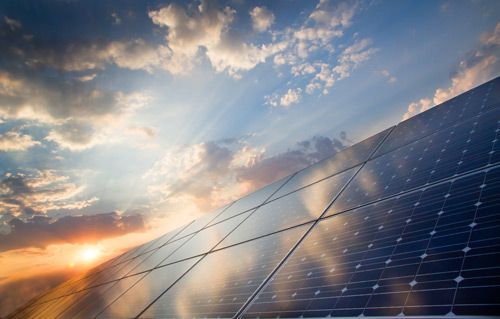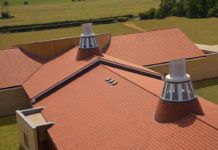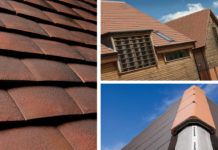 Earlier this year, on Wednesday June 7th, something remarkable happened in the UK and history was made. At midday, the National Grid control room reported a record 19.3 GW output of renewable energy, which, added to nuclear power, was enough to meet more than 50% of total electricity demand. Helped by early summer sunshine and a windy day, solar PV panels generated 7.6 GW and wind farms 9.5 GW of electricity; the remainder made up of 2 GW from renewable biomass and a small amount from hydro-electricity generation. For the first time ever, renewable energy and solar power together produced more electricity than gas and coal-fired power stations combined.
Earlier this year, on Wednesday June 7th, something remarkable happened in the UK and history was made. At midday, the National Grid control room reported a record 19.3 GW output of renewable energy, which, added to nuclear power, was enough to meet more than 50% of total electricity demand. Helped by early summer sunshine and a windy day, solar PV panels generated 7.6 GW and wind farms 9.5 GW of electricity; the remainder made up of 2 GW from renewable biomass and a small amount from hydro-electricity generation. For the first time ever, renewable energy and solar power together produced more electricity than gas and coal-fired power stations combined.
There are many reasons why installing solar PV panels on a roof is a good idea, such as to reduce energy reliance on the grid and protect against energy price increases, to earn money from the Government-backed FIT (Feed-in Tariff) scheme and to reduce carbon dioxide emissions. Though the number one question people tend to ask when considering the purchase of a solar PV system is ‘how long is the payback period?’
Of course the answer depends upon many factors, such as the initial cost of the system and its installation, the amount of sunlight and the orientation of the system. When it was introduced in April 2010, the FIT scheme was designed to provide a payback period somewhere in the region of ten years. The FIT is paid on every kWh unit generated by the solar PVT system, regardless of whether the power is consumed by the building or exported back into the grid. In addition, an Export Tariff is paid for electricity that is exported back to the national grid, which is estimated at half the electricity generated by the PV system.
System cost reduction
Since 2010, the cost of PV systems has dramatically reduced, the level of FIT has steadily decreased and the scheme length has reduced from 25 years to 20 years. The current FIT is 4.07p/kWh (reducing to 4.00/kWh after October 1st) for homes rated D or above in their Energy Performance Certificate. The Export Tariff is currently 5.03p per kWh. For homes with a lower energy performance rating, the FIT is 0.43P/kWh, reducing to 0.38/kWh after October 1st. Despite the reductions in FIT and scheme length, payback periods in 2017 average at five to six years, with some domestic schemes being as short as three years.

There is only a finite FIT ‘pot’ and such is the demand for FIT, a quota system was introduced in February 2016, known as ‘Deployment Caps’. Deployment Caps limit the number of systems that can be registered in any given quarter year period. Therefore, if the ‘cap’ has been reached for a particular quarter, any newly registered systems are placed in a queue. Ofgem provides a weekly update on their website so that the position of Deployment Caps can be tracked for any given quarter.
Perfect timing
The ideal time to install a system is when other roofing works are planned, whether it is a new build project or when stripping and re-tiling an old roof. This means proper access is already in place, the full cost of scaffold is not borne solely by the PV system and the ideal trade; i.e. the roofing contractor, is there to install or supervise the installation of the PV system.
Of course, roof PV systems can be retro-fitted over existing tiles and this is commonly done. However, the great opportunity for roofers is to offer an integrated system that fits flush with the roof tiles or slates, making for a more visually appealing finished roof.
Further opportunities
There are also opportunities for the roofer to ‘upsell’ additional high value technologies alongside the solar system itself, such as remote monitoring systems and battery storage. Battery storage has been problematic in the past due to the high cost and limited storage capacity of the batteries, but as with many things in modern life, advances in technology are improving battery performance to the point where it becomes a more viable option. The most efficient use of solar power is to run more appliances during the day when the sun is out. Where this is not always possible, battery storage would save any excess power for use when the PV system is not generating power.
The actual installation of a solar roof system is normally no more difficult than installing a roof window and its flashings, something which roofers are quite familiar with. Ideally, the roofer would work with an MCS-accredited electrician who would undertake the electrical installation of the solar system.
For the homeowner too, solar PV is a good investment. The monetary advantages are threefold; the cost of grid generated power is reduced, a FIT is paid on all power generated by the solar system and an extra tariff is paid on energy sent back into the grid. To some extent, the solar system would then ‘cushion’ the homeowner somewhat against future rising costs of grid-supplied electricity.
Social housing
For larger schemes such as social housing, there is the opportunity not only for tenants to save money on energy bills; the collection of the combined FIT represents an investment opportunity for the landlord or even independent investment groups. Remote monitoring means that the management company does not need to send personnel to read meters and check if systems are working properly. As with domestic installations, payback for the landlord or financial institution providing the initial funding averages five to six years.
In summary, in our view there are numerous benefits for roofers to include solar PV as part of their offer to clients.



